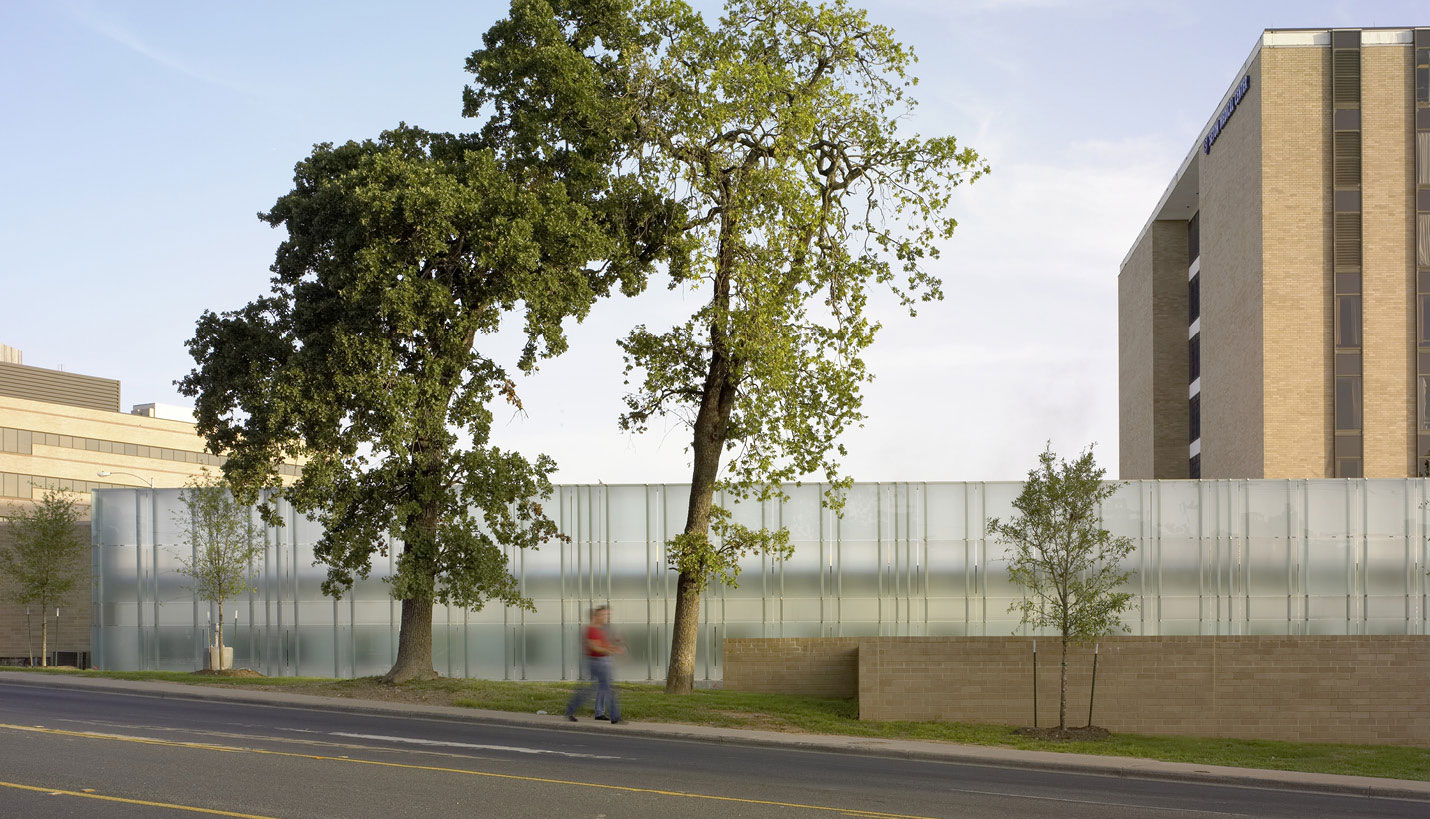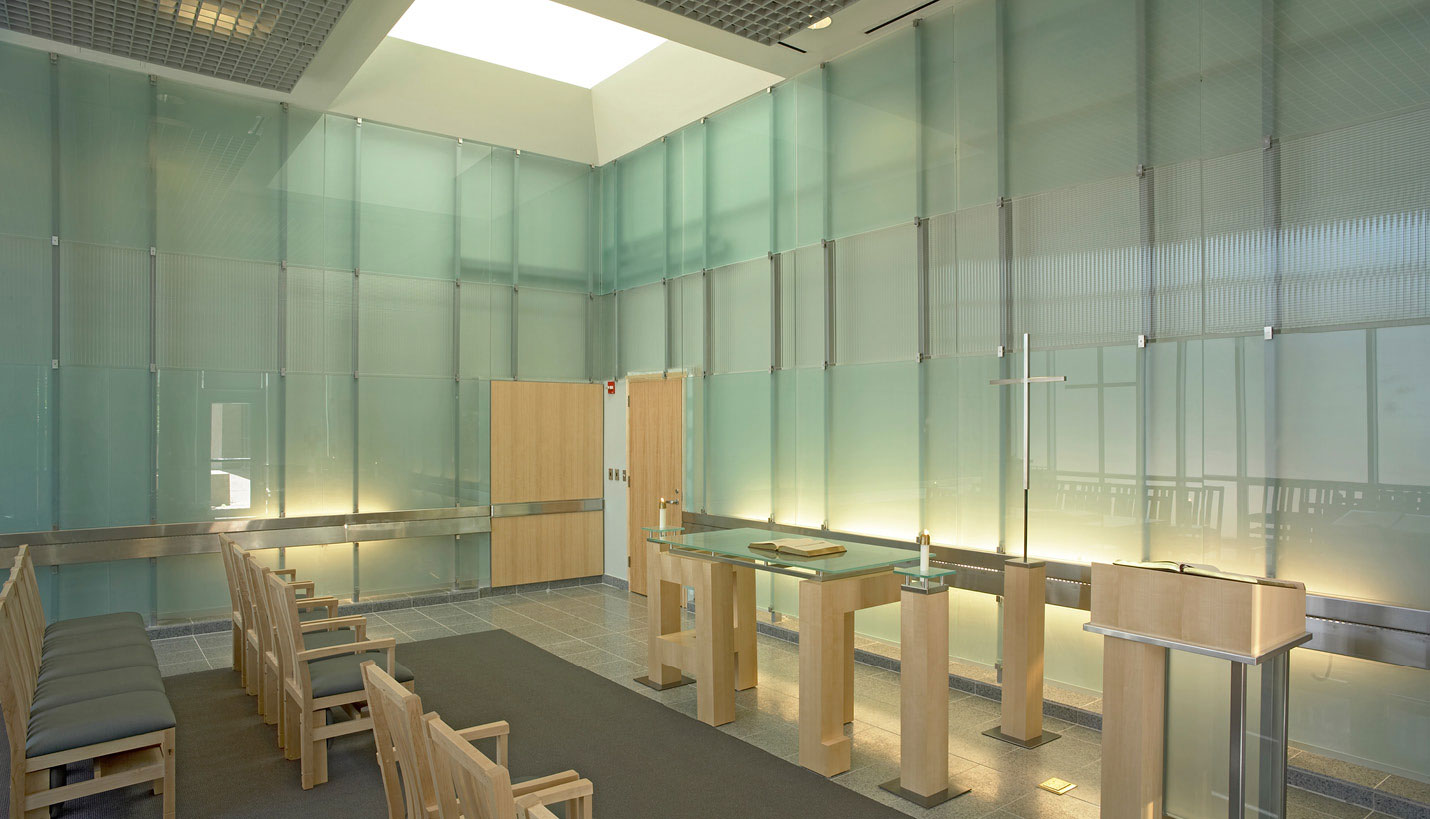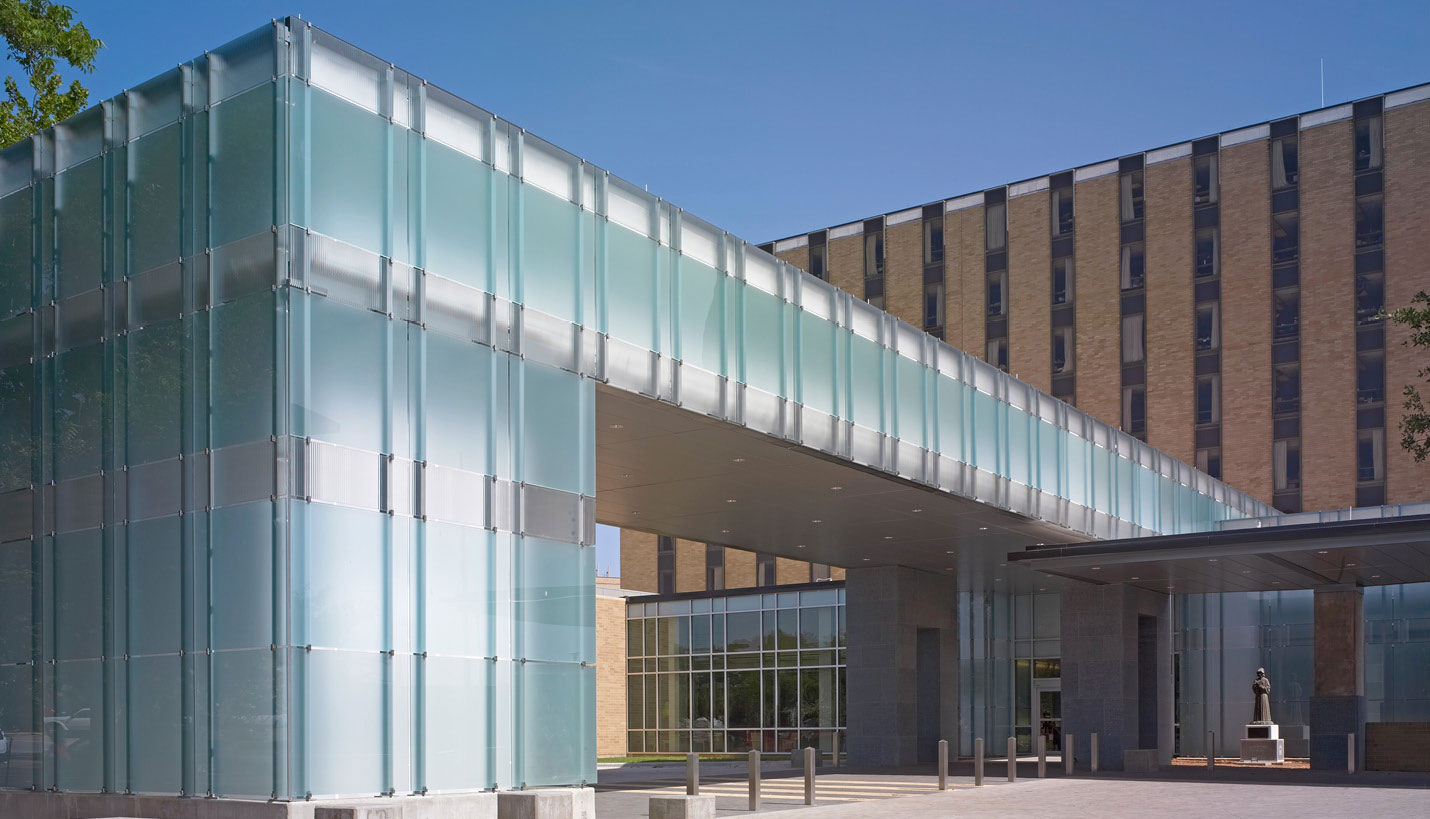The scope of this project involved building an expanded day surgery as well as creating a new entry, chapel and “front door” image for a rather dated 1970s hospital. Though tied visually to the original hospital by low brick walls and by shared rhythms and proportions, the new building offers a bold new image for the medical center. In order to make the complex feel more open and inviting, glass and light are used together to create a sense of precision and technological sophistication while also lending a feeling of softness and illusiveness. These qualities were deemed appropriate for a building where the very most modern medical equipment is employed alongside nurturing and compassion and where scientific exactness coexists with human emotion and vulnerability.
This Surgery Center addition added 13 operating rooms, 72 day hospital pre / post recovery rooms and a new patient admitting and testing center. The expansion increases the hospital’s surgery capacity while also giving it a fresh new look that feels precise and progressive as well as warm and secure.
A long, thin volume faced with translucent glass is strung along the north face of the new building drawing bright, cheerful light into recovery rooms without sacrificing visual privacy. Because of the slope of the site, much of the new surgery center would have been deprived of natural light without this device. At night, the glass volume is lit from within lending a safe, glowing presence at the front door of the 24-hour complex.
Inside, the new day surgery center is compact, orderly and efficient. Recovery rooms are organized in radial suites around nursing stations with easy visual access to each patient bed. Routes to surgery suites are direct and straightforward. Though the project required additions to existing surgical facilities, the new and old spaces create a well-integrated and indivisible whole. Lobbies and waiting areas are very logically arranged so that the process of arriving, waiting and departing is as simple and intuitive as possible for day surgery patients and their care-givers.
The new entry and chapel are flooded with natural light and continue the theme of translucent glass lit from without and within introduced on the building’s façade. Skylights, clerestory windows and large expanses of clear glass connecting the chapel to a private garden all serve to merge inside and outside. Granite floors, wood paneling in protected locations and the back-lit glass contribute to a sense of warmth and elegance while also providing durability and ease of cleaning and maintenance.
Media
"Seton Medical Center", Texas Architect Magazine [Design Award Issue]














